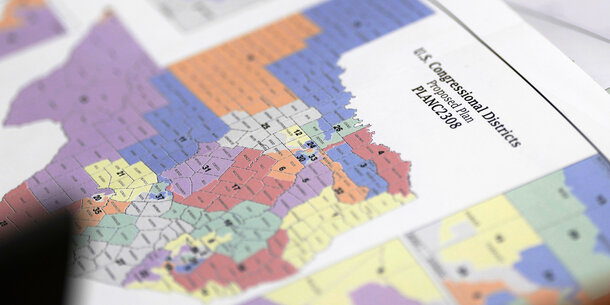This article originally appeared in The Hill
As we witness today’s falsehoods, tensions and attacks around our sacred right to vote with the thought of a unified, bipartisan agreement seeming like a pipe dream, voters in one of America’s most notable swing states have come together to take a stand against politically-driven division.
In 2018, Michigan voters turned out in record numbers to resoundingly say no to gerrymandering, passing a citizen-led initiative that takes power away from partisan politicians drawing congressional and legislative districts and giving it instead to an independent commission made up of everyday Michiganders.
Proposal 2, as the measure was known, didn’t just win at the ballot box, it won commandingly. Taking more than 61 percent of the vote statewide, the initiative carried 66 of 83 Michigan counties, both red and blue, large and small — and everything in between. But since then, a rise in extremism and push of President Trump’s “Big Lie” has contributed to a resoundingly favored commission now being under almost constant attack, with some seeking to return to a broken status quo that produced some of the most gerrymandered maps in the nation.
One of the most recent criticisms came from former Michigan state supreme court justice, Stephen Markman, who has been trying to convince members of the commission to ignore the literal language of the Michigan constitution, which states the commission is required to draw maps, where possible, that reflect the state’s diverse “communities of interest.”
A community of interest requirement is hardly unique to Michigan. All told, 15 states, ranging from Alaska to Washington, have some version of this for legislative districts, and 11 states have a similar or identical requirement for congressional districts. While states’ definitions of community of interest vary, most are similar to Michigan in defining a community of interest as including “populations that share cultural or historical characteristics or economic interests.
Despite calling himself a strict constructionist, Markman made a strange exception, telling commissioners they should cast aside the state constitution’s definition of community of interest in favor of one that is at odds with the text itself. Defying the voice of the people to instead promote political divisiveness trickling down from the national level, Markman’s preferred definition treats counties and other partisan, political subdivisions as the only legitimate form of community.
There is no reason for members of the Michigan commission to go down this road.
Preservation of communities of interest is at the core of reforms approved by voters. Indeed, in town hall after town hall, the splitting apart of these communities was one of the things that voters across the state disliked most. Breaking apart these communities to blindly follow arbitrary boundaries set a century or more ago doesn’t guarantee fairness, but in fact, it can be a deliberate tool for just the opposite. When politicians in Michigan, and many other states, gerrymandered districts, they drew maps along township, city and county boundaries, prioritizing a partisan makeup rather than common interests.
California offers a powerful illustration of how community of interest requirements can change representation for the better. In 2011, residents of the Los Angeles foothills came together to make the case to the California redistricting commission to redraw state assembly lines that better served the overriding representational need that was not being met under the current maps – wildfires. Their compelling testimony carried the day and resulted in today’s state representative from the area making wildfire prevention a priority.
For the people of a given region, it may well be that their county or township is the important “community” to which they belong. In other places, it won’t. But that decision is for the voters to establish. By letting Michiganders, Californians and others around the country tell redistricting commissions how they see their communities — and where representation is falling short — we can ensure that the people’s needs are being met ahead of politicians’.



